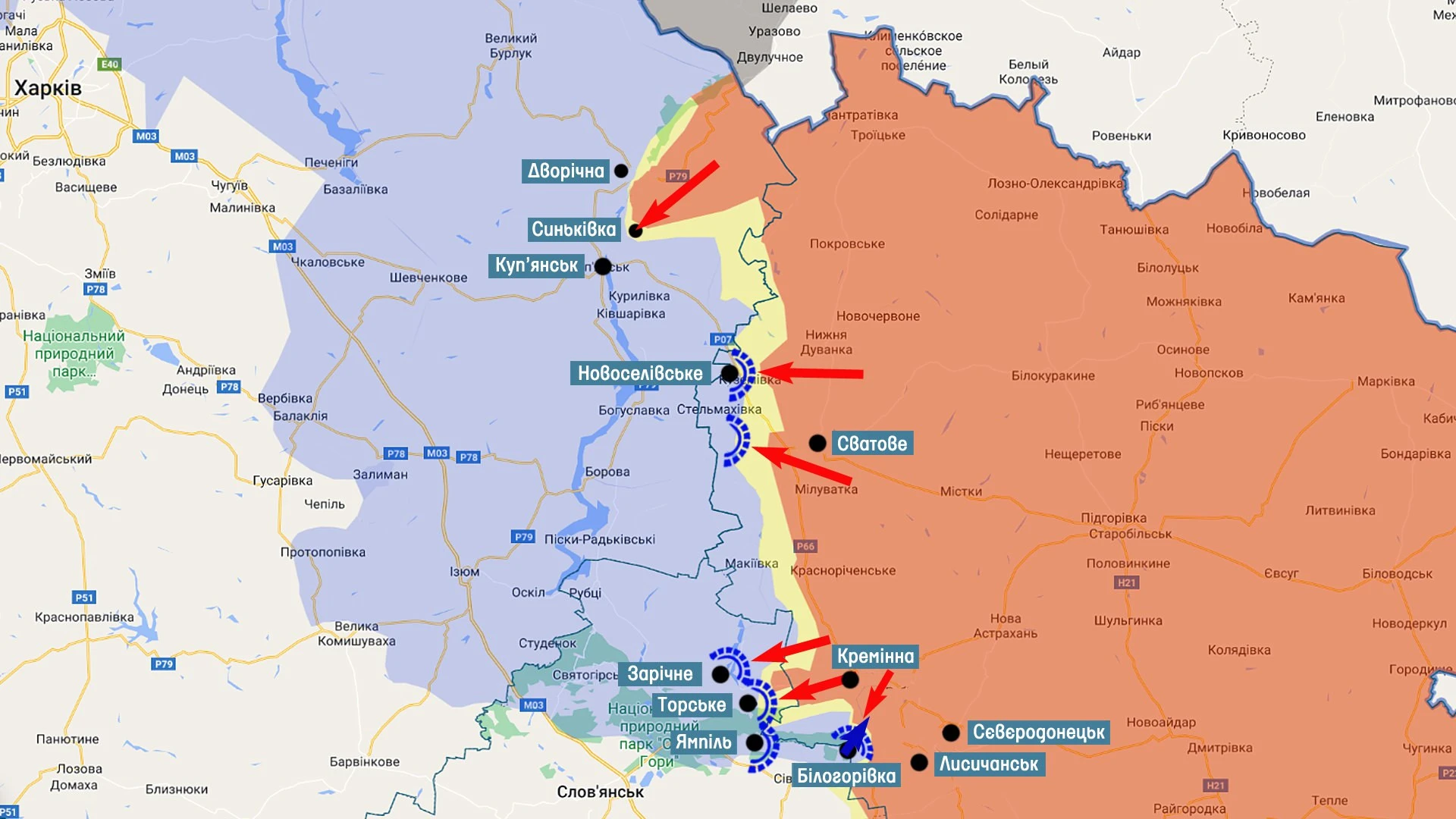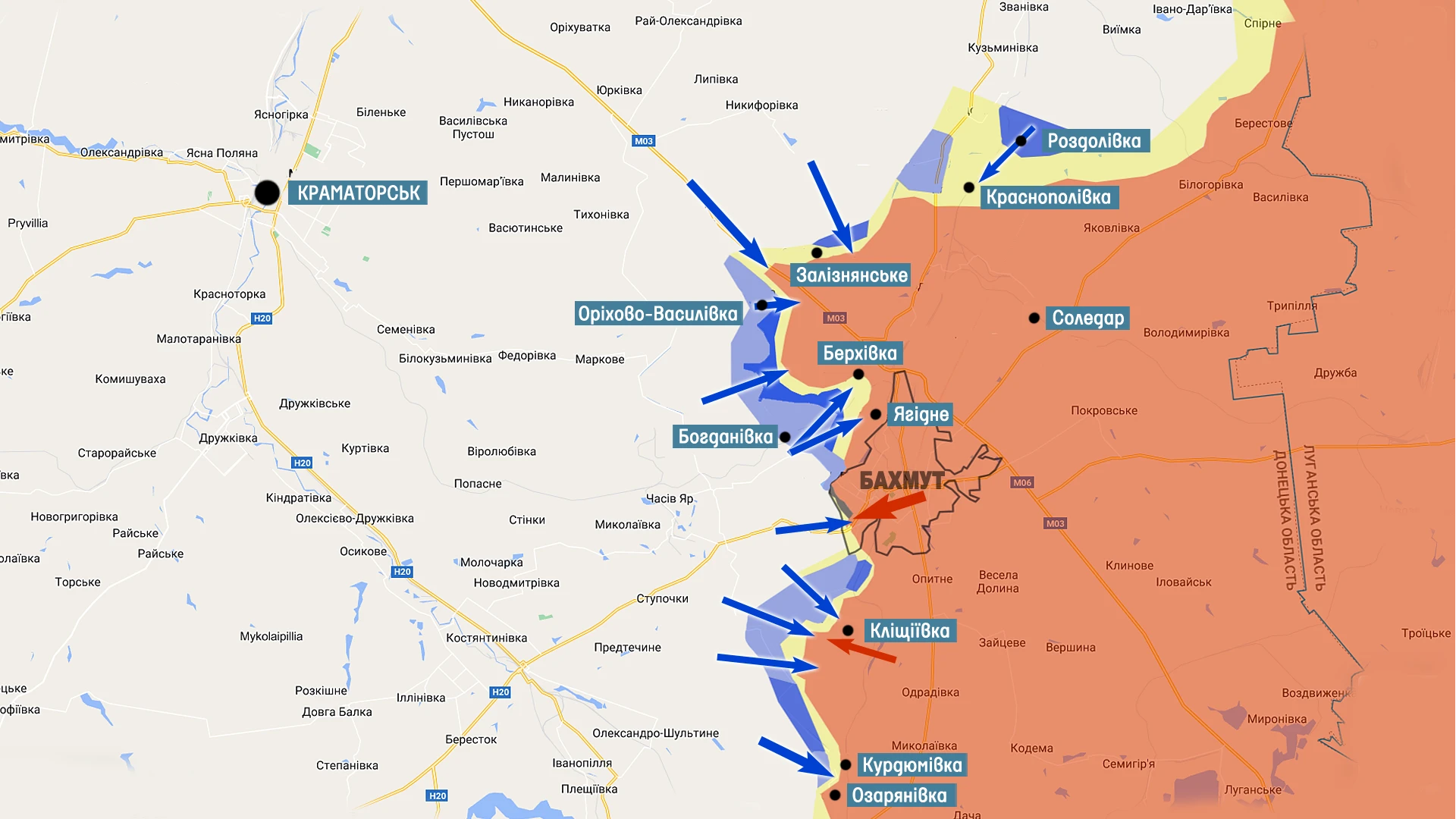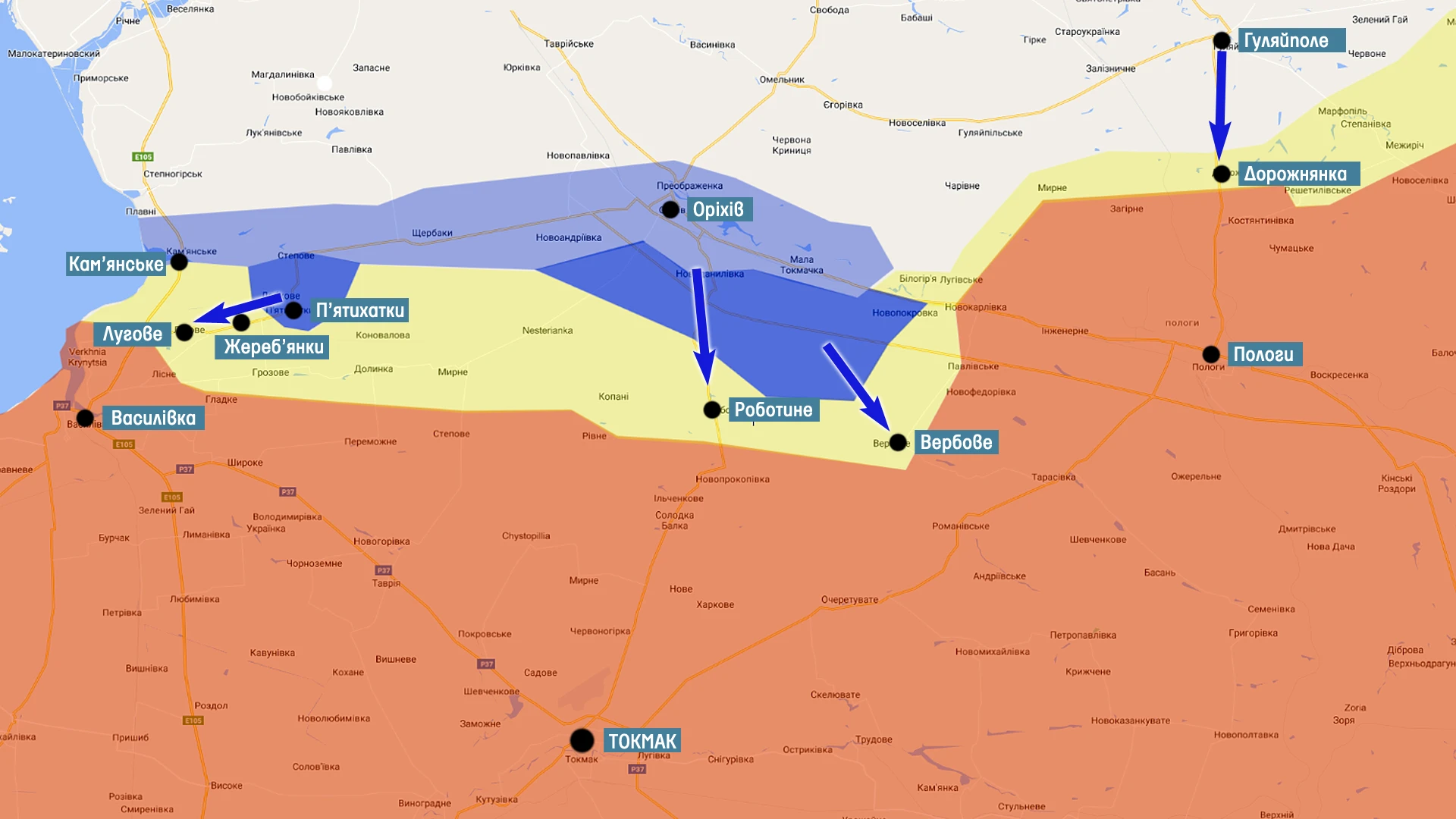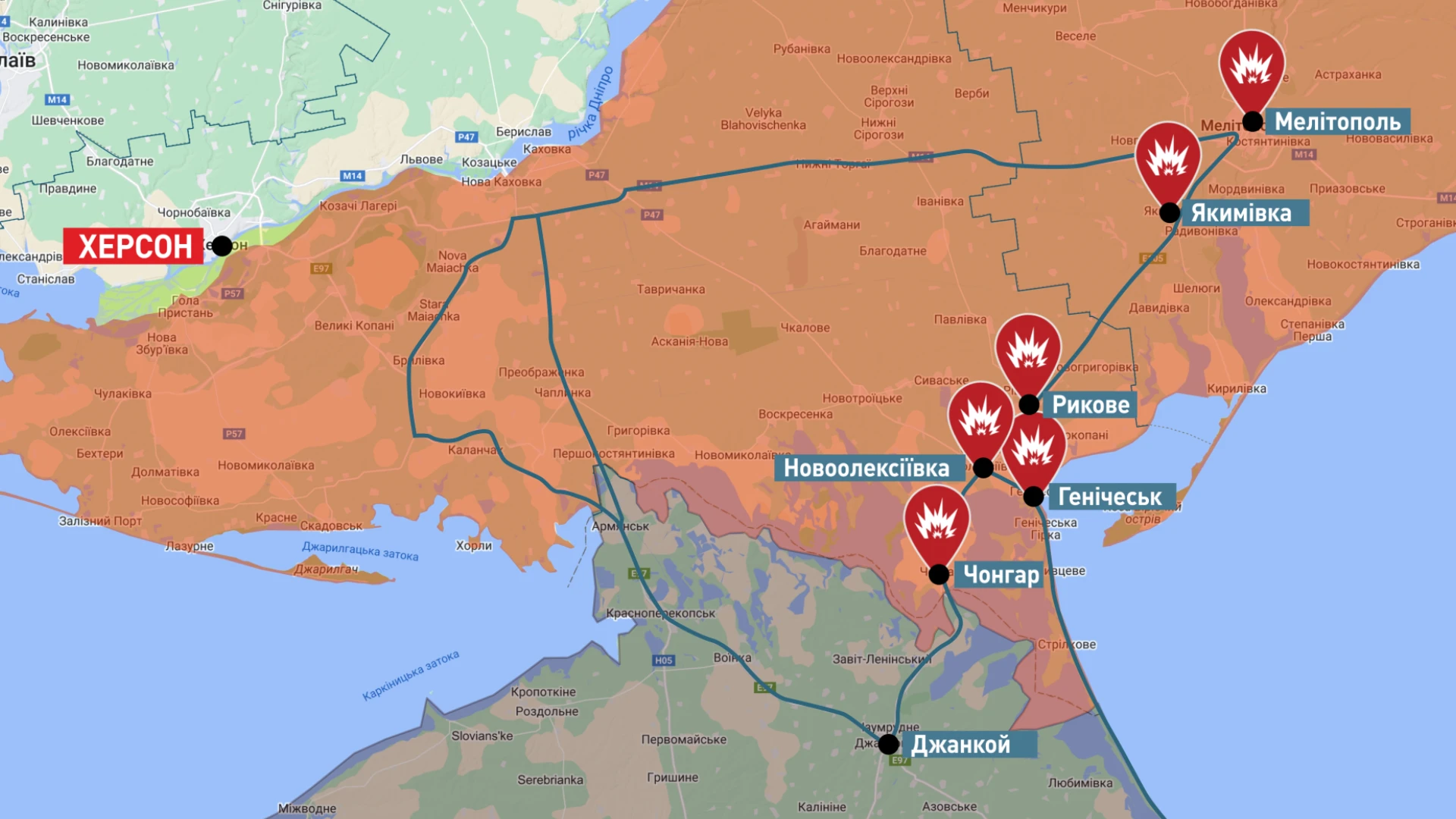
Russia will saturate Luhansk region frontline, Crimea may repeat Kherson region’s right bank scenario: military results of the week
Russia will deploy additional troops along the Kupyansk-Svatove-Kreminna frontline, aiming to divert Ukrainian forces from other regions to that area
Military expert Serhiy Zgurets has published his latest assessment of the frontline situation in Ukraine.
Luhansk region: the situation is dynamic and complex
The Luhansk direction is important and complex. In an interview with The Guardian, General Syrskyi said that Russia has deployed some of its forces to the Kupyansk-Svatove-Kreminna area with the intention of complicating the situation and seizing the initiative. He says that the Russians have not managed to seize the initiative, but the situation is tough. A report from the General Staff indicated that as of the morning of June 23, the Ukrainian Armed Forces successfully halted the Russian offensive in the Kupyansk and Lyman directions. Deputy Minister of Defense Hanna Maliar stated that throughout the day, Ukrainian Defense Forces conducted offensive operations towards Bilohorivka - Dibrova, achieving partial success and consolidating the gained positions.
This front line remains unchanged on the map itself, but it is dynamic and complex. The Russian forces have a West grouping that is well-equipped and supplied through Valuiki (Russia). This grouping has the capability to respond swiftly to any developments along the front line. It is likely that the General Staff of the Armed Forces of Ukraine will closely monitor and prioritize this particular section of the front. The enemy will continue to saturate this area with forces, aiming to draw Ukrainian troops from locations such as Bakhmut or other parts of the front.

The intensity of fighting in Bakhmut has decreased
For Russia, Bakhmut holds significant symbolic value as a city where they suffered a significant number of casualties, with around 100,000 soldiers killed or wounded. Retreating from Bakhmut would imply a sign of complete helplessness for them. Currently, the level of activity in Bakhmut has somewhat decreased. Cherevatyi, the spokesperson for the eastern military command, mentioned that there has been a drop in hostilities and attacks by the occupying forces, although rotations are taking place. Paratroopers are being deployed to the area. The Ukrainian command operating in Bakhmut is now focusing on preparing for active combat operations, with a primary objective of targeting and destroying the enemy's armored vehicles. Artillery is actively engaged, and there is progress, albeit slow, in the Klishchiivka area.

South: the stage of fighting in this format will last for several months, the Ukrainian Armed Forces are making progress
The Ukrainian Armed Forces have been highly successful in neutralizing Russian artillery, which indicates that they are effectively eliminating the primary threat. In the interview, Syrskyi detailed the situation in the eastern direction - the progress of the offensive and how he assesses it. Syrskyi's remarks are the response to a CNN report citing Western officials that the early stages of the Ukrainian counteroffensive have not met expectations and that the counteroffensive is having less success than expected. His remarks serve as a response to the weird publication. He says that everyone expects a big victory right away. He emphasizes the importance of patience and understanding that achieving significant victories takes time. A large number of forces, equipment and engineering obstacles are concentrated on both sides. General Syrskyi warns against underestimating the enemy, as they anticipate and reinforce their defenses in the most critical areas. He also mentions that the main Ukrainian forces have yet to be fully deployed, and the current operations are aimed at identifying weaknesses in the Russian defense. Once a vulnerable point is identified, the main forces will be employed accordingly.

How does this affect reality? At the moment, the fighting across the south is taking place in the defense zone in front of the enemy's main line of defense. Currently, the stage of luring out reserves is underway. As soon as they move and redeploy, they are supported by the enemy's artillery and the stage of counter-battery combat begins. Over the month, 553 artillery pieces were destroyed, a record high. What does this mean? These Russian reserves eventually become defenseless against our artillery. On June 23, Budanov's deputy, General Skibitskyi, said that the stage of fighting in this format will last for another 2-3 months. Following this period, Ukraine will assess Russia’s reaction, allowing for further adjustments and advancements by the Ukrainian forces.
On June 23, the General Staff said that the offensive had achieved partial success in the Mariupol and Berdiansk directions. These are Novodanilovka - Robotyne, the direction to Tokmak from Orikhove. The second direction strats from Polohy: Nova Tokmachka - Novofedorivka. There are successes and gains in these areas. Fighting also continues behind Pyatykhatky, where Ukrainian troops are trying to advance towards Zherebianka and develop an offensive on Vasylivka. These advances would create an opportunity for westward movement, potentially towards Enerhodar and Melitopol.
Ammunition for Ukrainian self-propelled artillery systems, cluster munitions from the US
Ukraine has a 203-mm caliber self-propelled Pion artillery system, which has a range of 47 kilometers. This is the most powerful artillery system with this range. Ukraine has charges, but no shells. The US has provided cluster munitions in 8-inch caliber that are compatible with the Pion system. By utilizing these American shells, Ukrainian forces can effectively target and penetrate enemy fortifications.
During a congressional hearing, the Assistant Secretary of Defense discussed the supply of certain weapons to Ukraine, including cluster munitions. When asked about their effectiveness, she stated that cluster munitions are a valuable tool in combat, particularly when engaging enemies entrenched in trenches. Instead of requiring multiple rounds of ammunition, a single cluster munition can be more effective in overcoming the enemy's defense line. This is a logical solution to overcome the enemy's defense line. The United States currently has approximately 3 million cluster munitions in stock. Cluster munitions can be seen as a suitable measure to enhance the capabilities of the Ukrainian army for 3 months of active hostilities.
Crimea is witnessing the repeat of a scenario similar to that of the right bank of the Dnipro River in the Kherson region, Shoigu's reserve army, and new drones at the frontline
The Russian troop grouping in the south heavily relies on supply routes through Crimea and Russia’s territory. Approximately 70% of their logistics is carried out via land, with about 30% utilizing the Crimean peninsula. Currently, a scenario similar to the previous situation where the enemy was pushed out of the right bank of Kherson, where bridges were destroyed, is unfolding. In the initial stages, the Russians may attempt to mitigate their losses, but the Ukrainian Armed Forces' actions are consistently intense. As the supply from Crimea becomes limited, it will gradually diminish the potential of the Russian group each month.

Shoigu is talking about creating a reserve army. I think he means 5 regiments (2,000) and 1 corps (30,000). This is 40,000 personnel. In fact, we still need to figure it out - Russia had made such decorative statements before. Besides, providing equipment and training for such a force would be a significant challenge. In practice, such troops often deploy to the front without proper equipment. There are currently no prerequisites for Russia to create these reserve armies. It is possible that Russia might draw lessons from the ongoing situation and opt for additional discrete mobilization, which Putin does not want to announce. Such discrete options for replenishing personnel may be implemented.
On June 22, videos appeared showing Russians examining the Switchblade 600. Previously, Ukraine used the Switchblade 300, which had a small, powerful warhead the size of a regular grenade. In contrast, the Switchblade 600 introduces a munition with an extended range of up to 40 kilometers and a flight duration of up to 40 minutes. This increased range and flight duration offer the potential to engage targets at greater distances. Furthermore, the warhead of the Switchblade 600 is capable of penetrating tanks and various armored structures. The deployment of this barrage munition signifies a significant development, earlier it has been in just manufacturing stages.
- News













































